what is membrane filter?
A membrane filter is a thin layer of material with very tiny pores that allows certain substances (like water or air) to pass through while blocking unwanted particles such as bacteria, dirt, or chemicals.
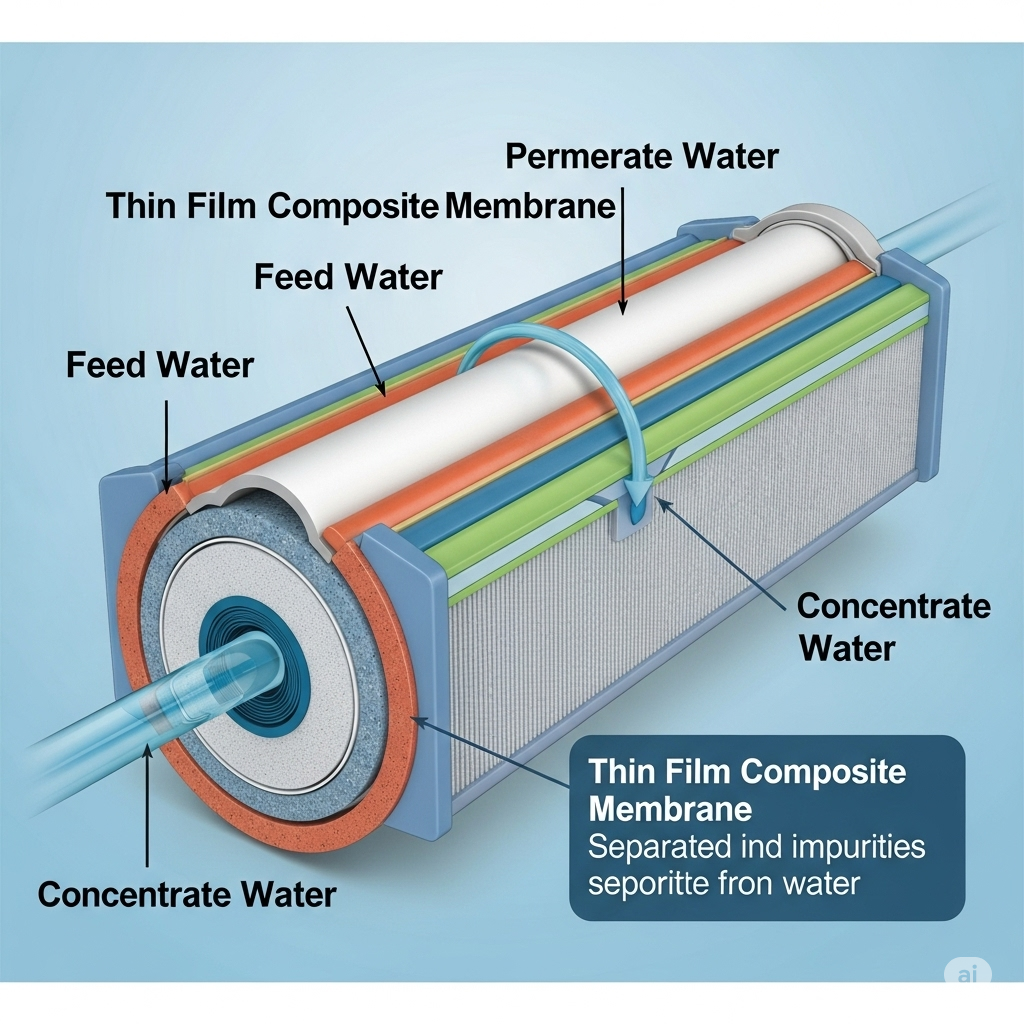
A semipermeable membrane made of thin film composite (TFC) material, which allows only water molecules to pass through while blocking:
- Salts
- Bacteria
- Viruses
- Heavy metals
- Organic matter
How does membrane filter works?
1 Water pressure pushes feed water through the membrane.
2 The pores in the membrane are about 0.0001 microns—so small that only pure water can pass.
3 Impurities are left behind and flushed away as wastewater (called brine or reject water).
4 Purified water (called permeate) is collected on the other side.
What are membrane filtration?
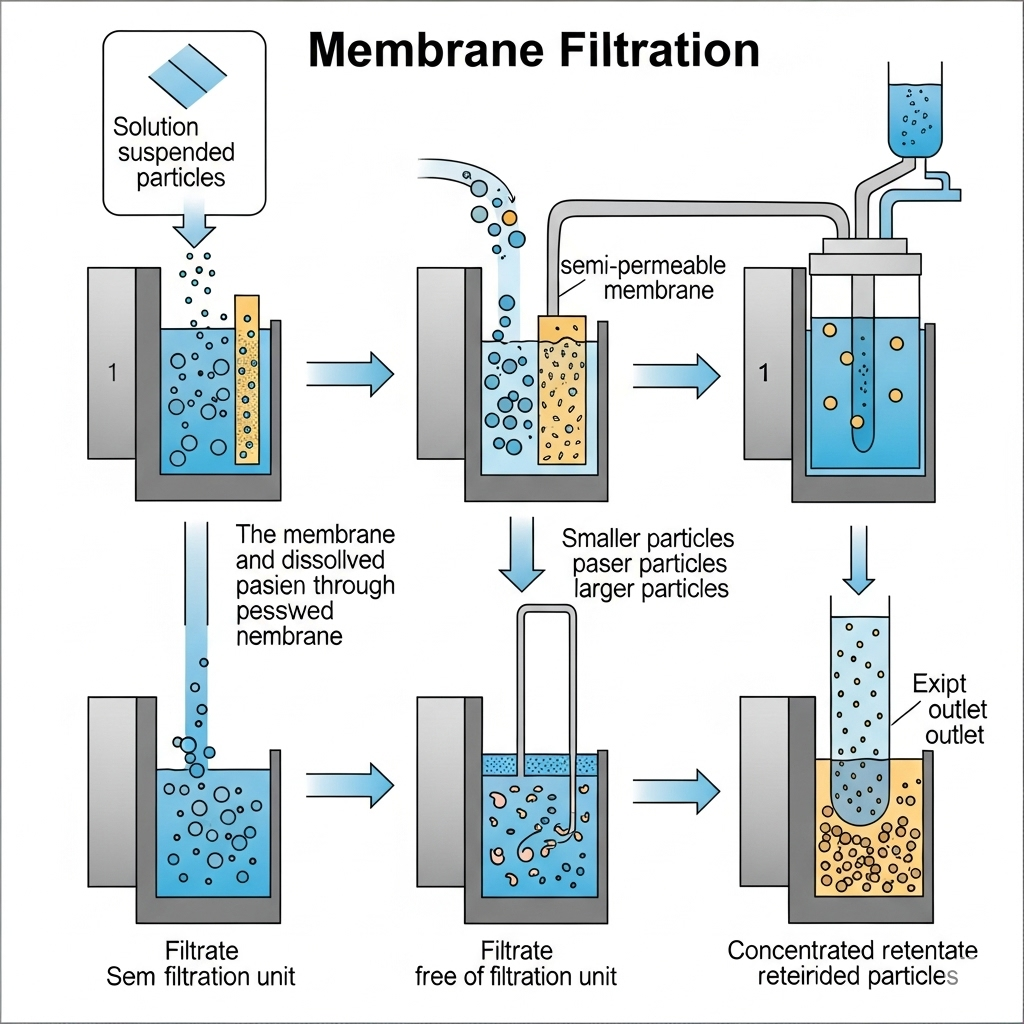
Membrane filtration is a separation process that uses a semipermeable membrane to remove particles, microorganisms, and dissolved substances from liquids (like water) or gases.
It is widely used in water purification, food processing, pharmaceuticals, and laboratories.
Types of membrane filtration
Membrane filters are classified based on pore size, material, and application. Here’s a breakdown of the main types of membrane filters:
| Type | Pore Size | Removes | Common Uses |
|---|---|---|---|
| Microfiltration (MF) | 0.1 – 5 µm | Bacteria, suspended solids | Water treatment, food & beverage, pharma |
| Ultrafiltration (UF) | 0.01 – 0.1 µm | Viruses, proteins, colloids | RO pretreatment, protein separation |
| Nanofiltration (NF) | 0.001 – 0.01 µm | Small organics, divalent salts | Softening water, dye removal |
| Reverse Osmosis (RO) | < 0.001 µm | Salts, dissolved solids, heavy metals | Drinking water purification, desalination |
| Gas separation membranes | Molecular scale | Specific gases | Oxygen/Nitrogen separation, CO₂ capture |
Reverse Osmosis (RO)
Reverse Osmosis (RO) is a water purification process that removes contaminants from water by using pressure to force water molecules through a semipermeable membrane.
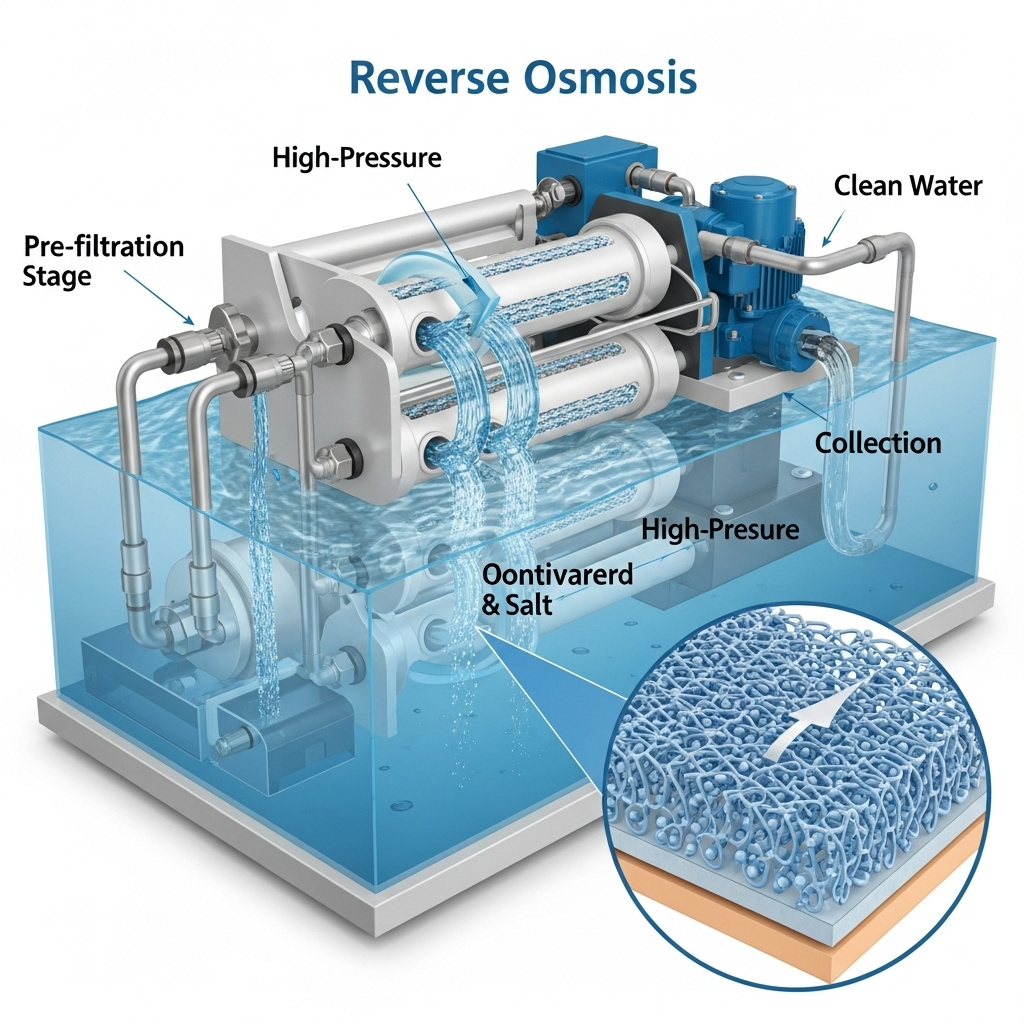
- Pressure is applied to the impure (feed) water.
- Water molecules pass through a semipermeable membrane.
- Dissolved salts, bacteria, viruses, and other impurities are blocked and flushed away.
- Clean water (called permeate) comes out the other side.
Microfiltration (MF)
Microfiltration (MF) is a membrane filtration process that removes suspended solids, bacteria, and some larger viruses from liquids by passing them through a membrane with pore sizes typically between 0.1 to 5 micrometers (µm)

Ultrafiltration (UF)
Ultrafiltration (UF) is a membrane filtration process that removes viruses, bacteria, proteins, and other macromolecules from liquids using a membrane with pore sizes between 0.01 to 0.1 micrometers filter (µm).
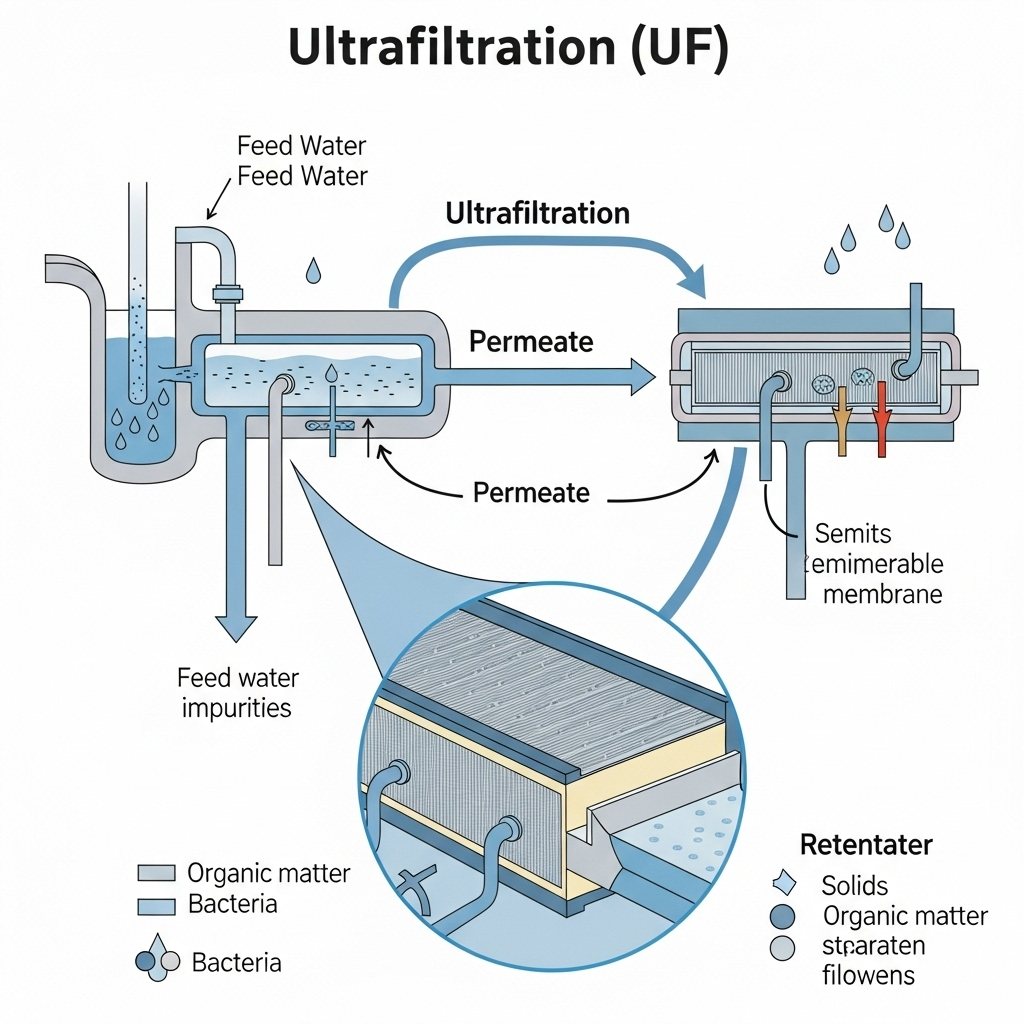
Nanofiltration (NF)
Nanofiltration (NF) is a membrane filtration process that removes small organic molecules, divalent and larger salts, and some viruses using a membrane with pore sizes around 0.001 micrometers (µm).
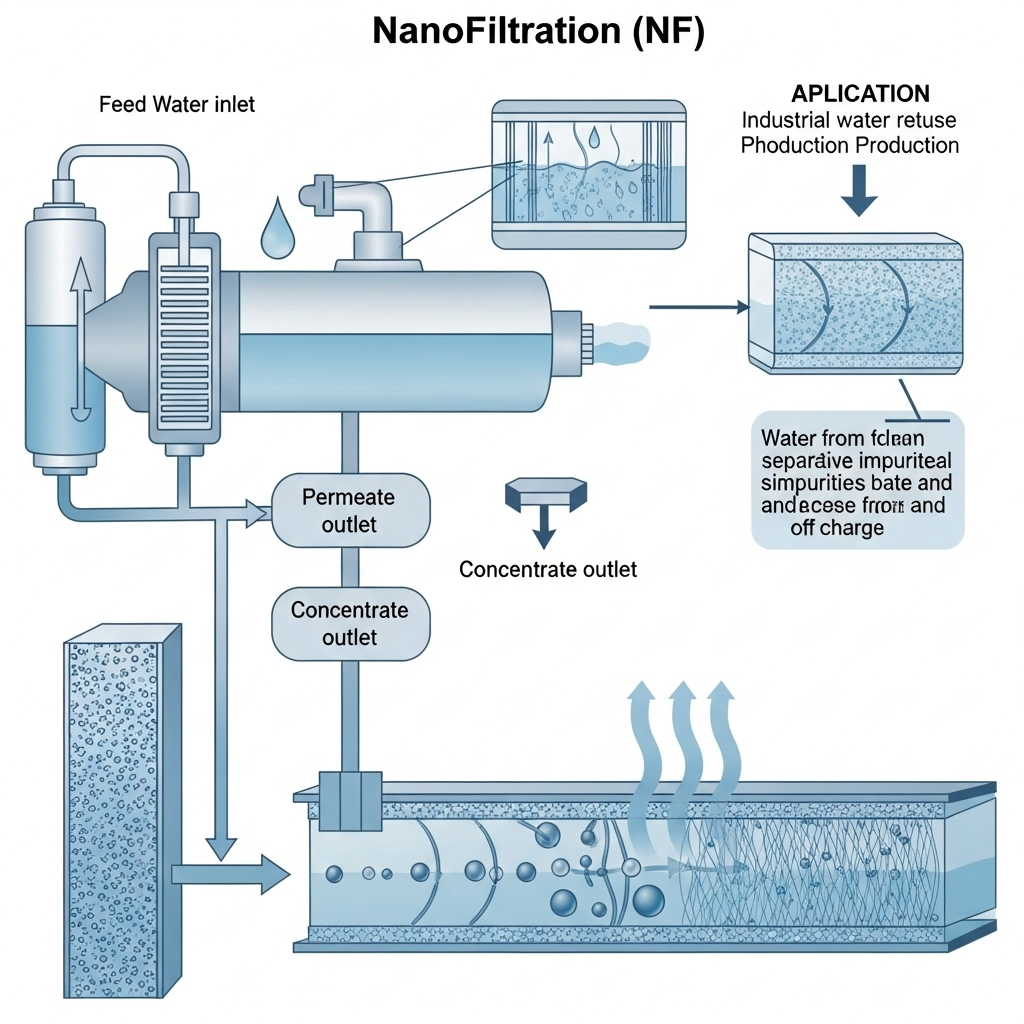
Membrane filter principle and its construction
He membrane filter method is a microbiological technique used to detect and count microorganisms, especially bacteria in liquids like water, milk, and beverages. It involves passing a sample through a microporous membrane filter, which traps bacteria on its surface. The membrane is then placed on a nutrient agar plate and incubated to allow the trapped microorganisms to grow into visible colonies that can be counted.
Filtration: A known volume of liquid is passed through a sterile membrane filter (typically 0.45 µm pore size).
Transfer: The membrane filter is carefully placed on a nutrient agar plate.
Incubation: The plate is incubated at an appropriate temperature (usually 35–37°C for 24–48 hours).
Colony Counting: Each visible colony represents one viable microorganism (CFU – colony forming unit) from the original sample.
Principle of Membrane Filter:
The membrane filter principle is based on size exclusion, where a liquid or gas is passed through a semipermeable membrane that allows only particles smaller than its pore size to pass through, while larger particles (like bacteria or sediments) are retained on the surface of the membrane.